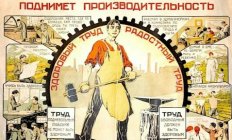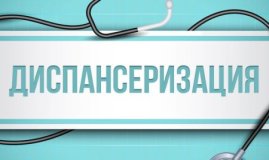What you need to know about labor protection
To return from work alive and well is the natural right of everyone. However, reality does not always coincide with declarations. The problem is so serious that it has attracted worldwide attention. This is how the World Day for Safety at Work appeared in the international calendar of memorable dates - it is celebrated annually on April 28.

Just think about these numbers: Worldwide, about 2.3 million deaths a year are caused by work accidents and occupational diseases. An additional 270 million people are injured with temporary disability, and the global economy is suffering 4% of GDP.
There is only one way to reduce statistics - prevention. For the social protection of employees from occupational risks, the mechanism of labor protection, enshrined in legislation, is used.
The difference between occupational health and safety
These concepts are often confused, but in fact, safety is only a small part of labor protection. It establishes the rules for working at a specific workplace, in a specific position or with separate equipment.
Let's explain with an example. Safety precautions may relate to working with a lathe, and its main task is to protect the worker from physical injury when turning parts. At the same time, the system of labor protection includes a whole range of measures:
Take care of yourself: what you need to know about labor protection
The purpose of all these measures is to minimize or completely eliminate the impact of harmful production factors on the health and life of personnel.
Obligations of an employee for labor protection
So far, we have mainly talked about the actions that the state and the employer should carry out. However, the preservation of the life and health of workers also depends on them.
So, at the enterprise, each employee must:
comply with labor protection requirements;
use means of individual and collective protection;
learn safe methods and techniques for performing work, providing first aid for injuries;
immediately notify the manager of dangerous situations, accidents at work and the deterioration of their health;
undergo mandatory medical examinations.
Also, the employee must undergo safety training. There are five types in total:
Introductory. Conducted upon admission to work (mandatory for trainees). Responsible for this briefing is a labor protection specialist.
Primary. Expects newcomers at a particular workplace, conducts it by the immediate supervisor.
Repeated. Mandatory for all employees who have passed the initial briefing. The frequency is once every six months.
Unscheduled. It is carried out when changing regulations on labor protection, installing new equipment or for debriefing after an accident at work.
Target. This type of briefing is required for performers of one-time and especially dangerous work, liquidators of the consequences of emergency situations, as well as participants in mass events (for example, corporate sports days).
What is the employee's right to?
We go to work to work, so the main thing that each of us has the right to is to work in conditions that meet the requirements of labor protection. The employer is obliged to provide these conditions.
So, it is the employer who is responsible for the safety of employees during the operation of buildings and structures. He also purchases protective equipment and conducts mandatory medical examinations at his own expense.
❗ Important! Certain categories of employees are entitled to additional guarantees in the field of labor protection. We are talking about women and teenagers.
Women's labor protection
Pregnant women should not be sent on business trips, involved in overtime work, work at night, weekends and holidays.
Getting ready for the birth of a baby? The employer must reduce the production rate for you or transfer you to another job where there are no harmful production factors. All that is needed for this is to submit a medical report (certificate of pregnancy) and write an application for transfer to light work.
Women with children under the age of 3 are allowed to be sent on business trips and involved in the above works only with their written consent.
Youth labor protection
Underage workers are prohibited from engaging in a variety of jobs with difficult, harmful or dangerous working conditions. Teenagers will not be able to get a job in a steel mill or a mine, a nightclub or a liquor store. The shift method and part-time employment are also prohibited.
In addition, teenagers should not be sent on business trips and asked to work overtime.
Another important point is working hours. It depends on the age of the employee:
from 14 to 16 years: no more than 24 hours a week;
16 to 18 years old: no more than 35 hours per week.
A teenager wants to earn extra money in his spare time? Then the duration of his working week will be halved from the age norms: to 12 or 17.5 hours, respectively.
Minors are allowed to be employed only after a preliminary medical examination. In the future, a medical examination is carried out annually until the young employee turns 18 years old.
The labor protection of minors also implies extended holidays - at least 31 calendar days. Leave can be used at any convenient time.
❗ If an employer violates your rights, contact the State Labor Inspectorate. According to your application, the supervisory organization is obliged to conduct an inspection.
How to become an occupational safety specialist?
If you are at the stage of choosing a future specialty and you like the noble idea of protecting the lives and health of people at work, take a closer look at the profession of Occupational Safety and Health Engineer. Find out which universities in your region train such specialists. For example, in Moscow it is:
Academy of the State Fire Service (AGPS EMERCOM of the Russian Federation);
Russian State Social University (RGSU);
Russian State University of Oil and Gas named after I. M. Gubkin;
Russian State Engineering University (MAMI);
Russian State University of Environmental Engineering;
Russian State University of Communications (MIIT);
Russian State Technological University named after K. E. Tsiolkovsky (MATI);
Moscow Technological Institute.
There is also an option for those who already have a diploma from any higher or secondary specialized educational institution: you can undergo professional retraining in the field of labor protection. Such courses are organized by accredited centers of additional education. The total amount of the program is 256 hours (60 days).
After successfully passing the final exam, you will be able to get a job in a profession in demand. It is unlikely that your employment will take much time: many enterprises are looking for labor protection specialists.
It does not matter whether you decide to link your professional life with labor protection or not - remember that its rules and instructions must be followed wherever you work. Do not rely "at random", be careful, responsible and careful, because your life and health in many ways are in your hands.
What's Your Reaction?



























































